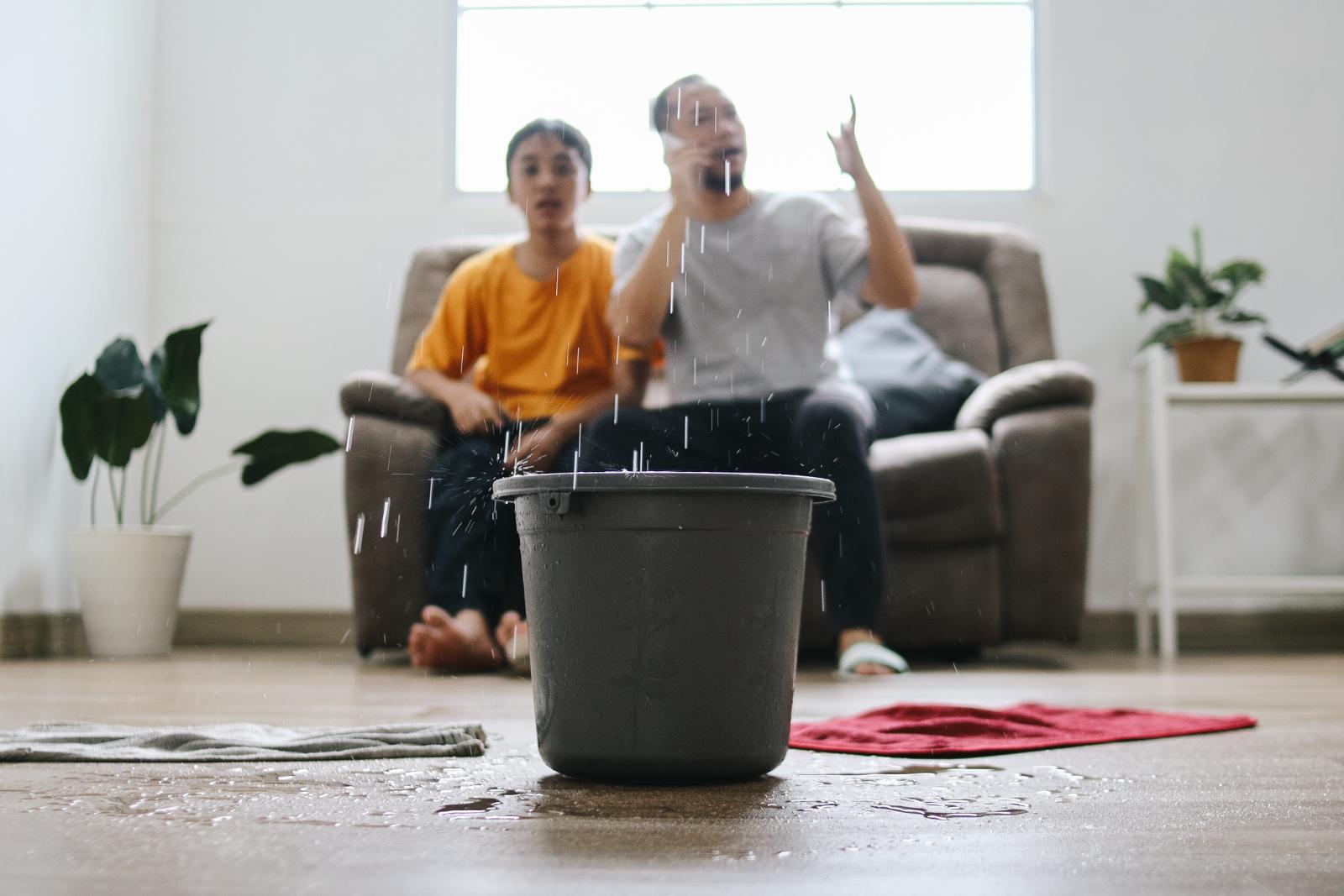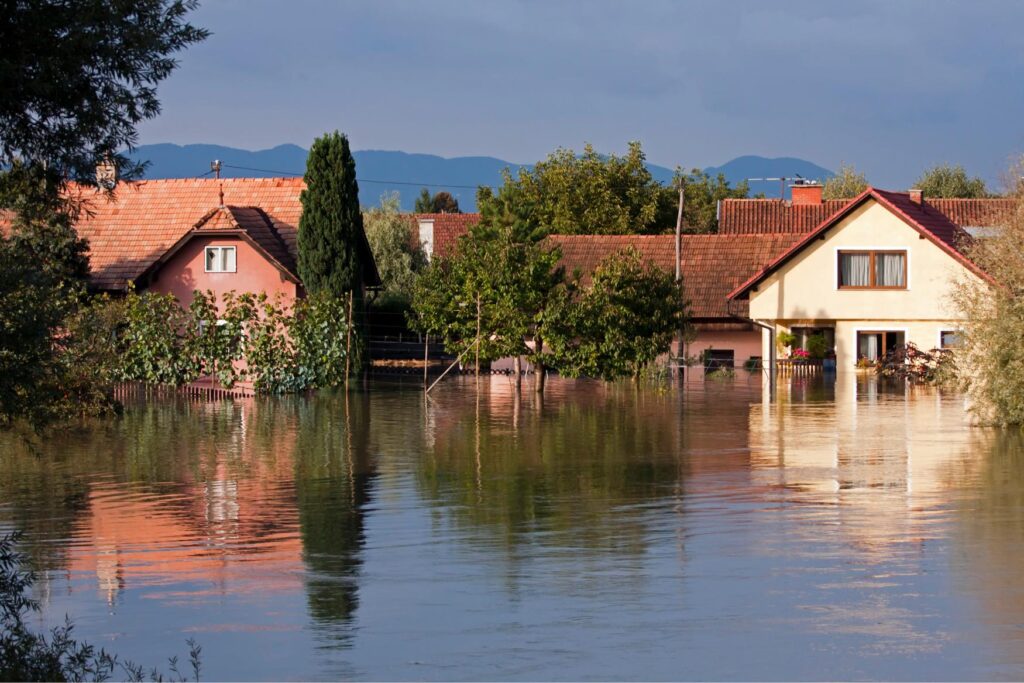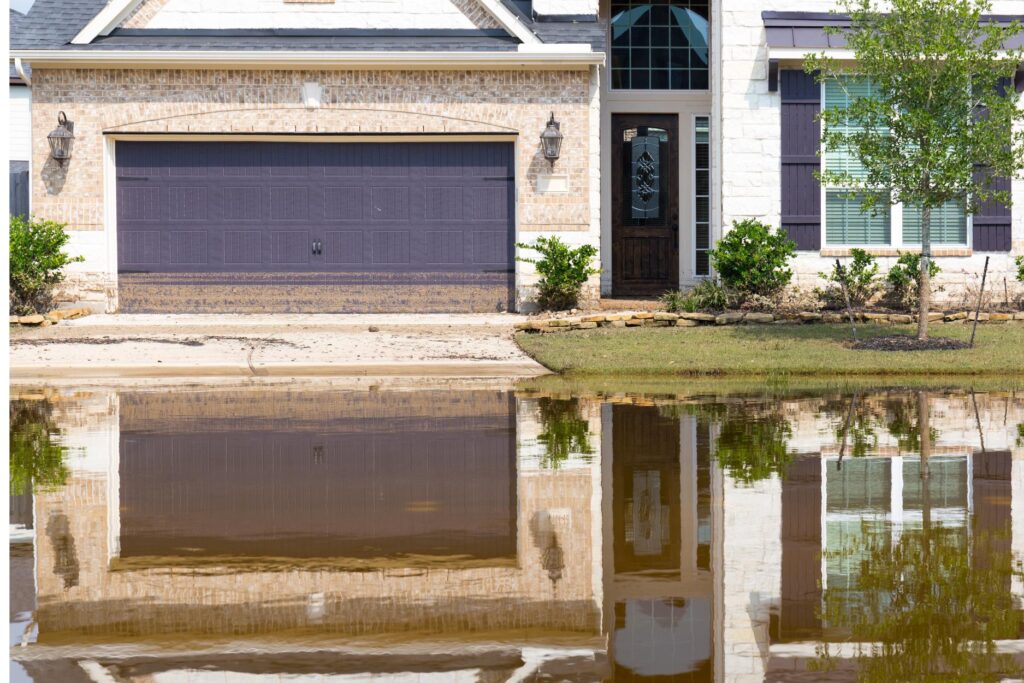Contents
If you’ve ever felt the satisfaction of completing a challenging task on your own, DIY water damage restoration might hold a similar appeal for you. The sense of accomplishment that comes from restoring your home after water damage can be both rewarding and empowering. However, before you grab your tools and get started, there are essential considerations to keep in mind that could make all the difference in the success of your restoration project. By understanding the benefits and potential pitfalls of DIY water damage restoration, you can decide whether to embark on this journey yourself.
Key Takeaways
- Cost-effective compared to professional services.
- Immediate response without delays.
- Personal control over the restoration process.
- Opportunity to gain valuable skills.
- Sense of accomplishment and empowerment.
Benefits of DIY Restoration
When facing water damage in your home, opting for DIY restoration can save you both time and money while allowing you to regain control over the restoration process. The cost savings associated with tackling water damage yourself can be substantial. Professional restoration services can be expensive, and by choosing to do it yourself, you can avoid these high costs.
Additionally, handling the restoration on your own can be a time-efficient solution. You don’t have to wait for professionals to schedule a visit; instead, you can start the restoration process immediately, preventing further damage to your home.
Engaging in DIY water damage restoration can also bring you personal satisfaction. Witnessing the progress and improvements you make in restoring your home can be incredibly fulfilling. It gives you a sense of accomplishment and ownership over the outcome.
Moreover, taking on the restoration process yourself provides an opportunity for skill development. You can learn valuable techniques and gain experience in dealing with water damage, which may be beneficial in the future. Building these skills can empower you to handle similar situations confidently and effectively.
Safety Precautions to Follow
To ensure a safe and successful DIY water damage restoration project, it is imperative to follow specific safety precautions throughout the process. Two critical safety aspects to consider during your restoration efforts are proper ventilation and electrical safety. Proper ventilation is crucial in preventing mold growth and ensuring a healthy indoor environment. When dealing with water damage, ensure adequate airflow by opening windows and using fans or dehumidifiers to dry out the affected area efficiently.
In terms of electrical safety, water damage can pose significant risks due to the potential exposure of electrical components to water. Before starting any restoration work, ensure that the power supply to the affected area is turned off to prevent electric shock. If water has come into contact with electrical outlets, wiring, or appliances, do not attempt to handle them yourself. Contact a professional electrician to assess and address any electrical hazards.
Below is a table summarizing the key safety precautions to follow during DIY water damage restoration:
| Safety Precaution | Description |
|---|---|
| Proper Ventilation | Ensure adequate airflow by opening windows and using fans or dehumidifiers to prevent mold growth. |
| Electrical Safety | Turn off the power supply to the affected area and avoid handling any electrical components exposed to water. |
Tools Needed for Restoration
To effectively restore water damage, you’ll need essential tools such as wet/dry vacuums, dehumidifiers, and air movers. Equipment for drying includes moisture meters, infrared cameras, and thermal hygrometers to assess the extent of water saturation.
Don’t forget to prioritize safety by wearing protective gear like rubber gloves, goggles, and respirators to prevent exposure to harmful contaminants.
Essential Restoration Tools
Equip yourself with the essential restoration tools necessary to effectively tackle water damage in your home. When facing DIY challenges in water damage restoration, having the right tools can make a significant difference in the outcome.
To start, you’ll need a wet/dry vacuum to extract standing water efficiently. This tool is crucial in the initial stages of restoration to prevent further damage and mold growth.
A moisture meter is also essential for accurately measuring the moisture levels in different materials, guiding your restoration techniques.
Additionally, having air movers and dehumidifiers can aid in drying out the affected areas quickly and effectively, reducing the risk of structural damage and mold formation.
Don’t forget about basic tools like screwdrivers, utility knives, and safety equipment to ensure a safe and thorough restoration process.
Equipment for Drying
Ensure you have the necessary equipment for drying out water-damaged areas effectively during the restoration process. Proper moisture detection tools are essential to identify all affected areas accurately.
Utilize wet vacuums to remove standing water efficiently, ensuring a thorough extraction process. Once excess water is eliminated, strategically place dehumidifiers to reduce humidity levels and prevent mold growth. Proper dehumidifier placement is crucial for optimal air circulation and drying efficiency.
In addition to dehumidifiers, air movers play a significant role in speeding up the drying process. These powerful fans help evaporate moisture from surfaces, promoting faster drying times.
When using air movers, ensure they’re pointed toward wet areas to enhance evaporation and aid in overall drying.
Safety Gear Required
For your safety during the restoration process, it’s imperative to have the necessary protective gear and tools on hand. Here are some safety precautions to keep in mind:
Protective Clothing: Wear gloves, goggles, and a mask to shield yourself from contaminants and harmful fumes.
Rubber Boots: Keep your feet dry and protected while walking through water-damaged areas.
Heavy-Duty Trash Bags: Use these to dispose of waterlogged materials and prevent further contamination.
Respirator: Ensure proper ventilation by using a respirator to avoid inhaling mold spores or other airborne particles.
Proper ventilation is crucial to prevent mold growth and maintain a healthy environment during the restoration process. By following these safety precautions and using the right protective gear, you can effectively tackle water damage while keeping yourself safe.
Assessing the Extent of Damage
Before jumping into restoration work, it’s crucial to assess the full extent of the damage caused by water. Understanding the scope of the damage will help you determine the necessary steps and resources for the restoration process.
Damage Assessment Importance
Conduct a thorough assessment to accurately determine the extent of water damage in your home, allowing you to plan and execute effective restoration efforts efficiently.
When assessing the damage, consider the following key points:
Identify Affected Areas: Look for visible signs of water damage, such as water stains, discoloration, or peeling paint on walls and ceilings.
Check Structural Integrity: Assess the structural components like walls, floors, and ceilings for any signs of weakening or warping due to water exposure.
Inspect Electrical Systems: Ensure to check electrical outlets, wiring, and appliances for any water damage to prevent potential hazards.
Evaluate Mold Growth: Look out for any mold or mildew growth, especially in damp or hidden areas, as it can pose health risks and further damage if not addressed promptly.
Scope of Restoration
Assessing the extent of water damage is crucial for developing an effective restoration plan and ensuring comprehensive repairs.
When evaluating the damage, consider not only what’s visible on the surface but also any hidden issues that may have arisen. Water can seep into walls, floors, and other structures, leading to potential mold growth and structural weakening if left unchecked.
Understanding the full scope of the damage is essential for determining the appropriate restoration techniques needed to address the issue thoroughly.
Removing Standing Water
To effectively address the issue of standing water in your space, the first step is to swiftly start removing the water using appropriate tools and methods. When dealing with standing water, time is of the essence to prevent further damage and mold growth.
Here are some crucial steps to follow:
Water extraction: Utilize a wet/dry vacuum or a pump to remove as much water as possible from the affected area. Be sure to focus on extracting water from carpets, flooring, and any other water-absorbing materials.
Dehumidifier placement: Position dehumidifiers strategically in the space to help reduce moisture levels in the air, aiding in the drying process and preventing mold growth.
Floor drying: Use towels, mops, and squeegees to dry the floors thoroughly. Pay special attention to areas where water may have seeped underneath flooring or into crevices.
Mold prevention: After removing standing water, it’s essential to keep the area well-ventilated to promote drying and inhibit mold growth. Consider using fans to improve air circulation and hasten the drying process.
Drying Out the Area
Now that you’ve removed the standing water, it’s crucial to focus on thoroughly drying out the affected area to prevent further damage.
Utilize tools like dehumidifiers, fans, and wet/dry vacuums to speed up the drying process effectively.
Regularly monitor moisture levels using moisture meters to ensure that the area is completely dry before moving forward with repairs.
Importance of Thorough Drying
Ensuring thorough drying of the affected area is paramount in water damage restoration to prevent mold growth and further structural damage. Proper drying techniques are crucial for successful restoration. Here are some essential tips to achieve thorough drying:
Maximize Air Circulation: Open windows and doors and use fans to increase air circulation within the affected area. This helps accelerate the drying process by allowing moist air to escape and drier air to enter.
Strategic Dehumidifier Placement: Position dehumidifiers in key locations to extract excess moisture from the air efficiently. Place them in areas where water damage is prominent or where air circulation is limited.
Focus on Hidden Spaces: Don’t overlook hidden or hard-to-reach areas like wall cavities or under flooring. Ensure these spaces are adequately dried to prevent mold growth and structural issues.
Regularly Monitor Progress: Continuously check the moisture levels in the affected area using a moisture meter. Adjust the drying techniques accordingly until the area is completely dry.
Tools for Effective Drying
Maximize the effectiveness of the drying process by utilizing a range of specialized tools designed to expedite the removal of moisture from the affected area. To start, invest in a moisture detection tool, such as a moisture meter. This device helps identify hidden pockets of moisture within walls, floors, or ceilings, ensuring no dampness goes unnoticed.
Once the moisture-prone areas are identified, employ air movers strategically. These powerful fans accelerate evaporation by circulating air and reducing humidity levels. Complement the air movers with a dehumidifier to extract excess moisture from the air, further aiding in the drying process.
For stubborn dampness, consider using a wet/dry vacuum to remove standing water or excess moisture from carpets and upholstery. Additionally, if the water damage is extensive, a portable or industrial-grade heater can speed up evaporation by raising the temperature in the affected area.
Monitoring Moisture Levels
Utilize a combination of specialized tools and techniques to effectively dry out the area and monitor moisture levels during the restoration process. Monitoring moisture levels is crucial in ensuring that all the water damage has been properly addressed.
Here are some key points to consider:
Moisture Detection Tools: Invest in moisture meters or hygrometers to accurately measure the moisture content in different materials. These tools will help you identify areas that may still be wet, even if they appear dry on the surface.
Regular Inspections: Conduct regular inspections of the affected area to track the progress of the drying process. Look out for any signs of lingering moisture or potential mold growth.
Proper Ventilation: Ensure adequate ventilation in the space being restored. Good airflow can help expedite the drying process and prevent musty odors.
Utilize Dehumidifiers: Use dehumidifiers to extract excess moisture from the air, aiding in the overall drying process. Position them strategically to maximize their effectiveness.
Dealing With Mold Growth
When addressing mold growth during water damage restoration, promptly inspect all affected areas for visible signs of mold spores. Mold can start growing within 24-48 hours of water exposure, so it’s crucial to act swiftly.
Mold prevention is key to avoiding health risks associated with mold exposure. Mold spores can cause respiratory issues, allergic reactions, and other health problems, especially in individuals with compromised immune systems.
To effectively deal with mold growth, ensure proper humidity control in the affected areas. High humidity levels create an ideal environment for mold to thrive. Use dehumidifiers and fans to reduce moisture levels and increase ventilation. Additionally, consider using mold inhibitors on surfaces susceptible to mold growth.
If you discover mold during your water damage restoration efforts, it’s essential to address it immediately. Wear protective gear such as gloves, masks, and goggles to prevent exposure to mold spores. Clean moldy surfaces with a mixture of water and detergent, scrubbing gently to remove the mold.
For larger mold infestations, it’s advisable to seek professional help to ensure thorough removal and prevent regrowth.
Repairing Damaged Materials
Inspect the damaged materials thoroughly to assess the extent of the repairs needed after addressing mold growth during your water damage restoration process. When repairing materials, following proper drying techniques to prevent further issues is crucial.
Here are some key points to consider when repairing damaged materials:
Identify the Source: Ensure the water source has been fixed before starting repairs to prevent future damage.
Remove Wet Materials: To avoid mold growth, discard any materials that cannot be salvaged and are still wet.
Utilize Air Circulation: Enhance airflow in the affected area by opening windows and using fans or dehumidifiers to aid in the drying process.
Monitor Moisture Levels: Regularly check moisture levels in the repaired area to confirm that materials have dried completely and to prevent mold re-growth.
Preventing Future Water Damage
Ensure that all potential entry points for water, such as cracks in the foundation or leaky pipes, are properly sealed to prevent future water damage. Waterproofing techniques play a crucial role in safeguarding your home. Consider applying waterproof sealants to vulnerable areas like basements and crawl spaces. Regularly inspecting these seals and addressing any signs of wear and tear promptly can significantly reduce the risk of water intrusion.
Leak detection is another essential aspect of preventing water damage. Stay vigilant for any signs of leaks, such as water stains on ceilings or walls, musty odors, or dripping sounds. Addressing leaks promptly can prevent extensive damage to your property and belongings. Additionally, investing in a quality leak detection system can provide early alerts to potential water issues.
Foundation repair is vital in maintaining the structural integrity of your home and preventing water damage. Cracks in the foundation can serve as entry points for water, leading to seepage and flooding. Conduct routine inspections of your foundation and address any cracks or damages promptly. Seeking professional help for foundation repairs when needed can prevent further deterioration and potential water damage risks.
Regular maintenance is key to preventing future water damage. Stay proactive in inspecting your home for any vulnerabilities, addressing issues promptly, and investing in preventive measures to safeguard your property from water damage.
When to Seek Professional Help
If you encounter water damage that exceeds your ability to effectively address it or if the situation poses a risk to your safety, seeking professional help is crucial for efficient restoration and mitigation. When it comes to water damage, knowing when to call in the experts can make a significant difference in the outcome of the restoration process.
Here are some key indicators that it’s time to hire professionals:
Signs of hidden damage: If you notice musty odors, peeling paint, or discolored walls, these could be signs of hidden water damage within the walls or under the flooring. Professionals have the tools and expertise to detect and address hidden water damage effectively.
Hiring professionals: Professional restoration companies have the experience and equipment necessary to handle water damage of any scale. Their knowledge of the best restoration practices can help prevent further damage to your property.
DIY vs professional restoration: While DIY efforts can be cost-effective for minor water damage, larger or more complex situations are best left to professionals. They can ensure thorough restoration and help prevent mold growth or structural issues.
Water damage costs: Professional restoration services may seem costly upfront, but they can actually save you money in the long run by preventing extensive damage that could lead to expensive repairs.
Knowing when to seek professional help can ultimately save you time, money, and stress when dealing with water damage restoration.
Summary
By taking on DIY water damage restoration, you can save money and time and gain a sense of accomplishment. Remember to prioritize safety, use the necessary tools, assess the damage thoroughly, remove standing water, address mold growth, repair damaged materials, and prevent future issues.
Stay proactive in maintaining your home’s integrity, and be prepared to seek professional help if needed. Take control of your restoration process and restore your living space with confidence and skill.




